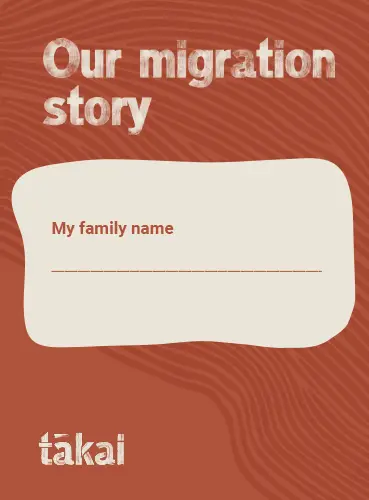
Pacific peoples and cultures in Aotearoa
A starting point for building your understanding of Pacific communities in Aotearoa, and the values and worldviews they often share. Each Pacific community has their unique culture, languages and practices, which are explored further in related pages.
Pacific homelands
Pacific peoples in Aotearoa New Zealand have come from lands where they’re the majority, their languages, spirituality, knowledge and worldviews are dominant, they own most of the natural resources, they are self-reliant, and government support is limited.
The strength of Pacific peoples is connected to traditions of collective self-determination and guardianship of collective assets. Land, kin and sea sustain life, identity, unity and security, and are protected for future generations.
The search for social and economic opportunities and new places to settle has created Pacific communities around the globe. For many generations of Pacific people who live overseas, Aotearoa and other places are now ‘home’, where they do not consider themselves ‘visitors’.
The Pacific homelands continue to hold spiritual significance to those who are tied to them. They are often where Pacific people wish to rest when they die, sometimes so future generations can trace their roots ‘home’.
E felelei manu ae ma’au i o latou ofaga.
Migration stories
Migration stories play a big part in many Pacific family histories. Older family members often share the stories of the family’s migration to Aotearoa with children. They share the dreams and goals that brought them or past family members here and how this has shaped who they are now.
These stories reinforce relationships across multiple generations, with family members alive and passed, and make children aware of the struggles and sacrifices involved in making a life for their family in Aotearoa.
Every indigenous Pacific child is connected to this heritage even if they have not grown up knowing it. Meaningfully integrating a Pacific child’s cultural identity and connections into interactions will promote their wellbeing and outcomes.
Views about children
Pacific children are considered gifts from God and therefore sacred. The child is a bond between families, a connection between the past, the present and what could be.
Pacific families believe in their fundamental responsibility for their children. Elders are expected to provide guidance and support to ensure the wellbeing of the whole family, and to educate the younger generation about culture, family histories and genealogies. In turn, children are expected to serve and respect and learn from their elders.
To focus only on the needs and aspirations of Pacific children without considering the needs of their families is seen as harmful to Pacific children and in conflict with the cultural fabric of Pacific cultures.
Culture is ever evolving
As with any group, there may be just as many similarities as differences between the Pacific people you see every day.
Established traditions, values and behaviours particular to any group of people vary over time, between generations, and in different contexts. Pacific people in Aotearoa also have increasingly multi-ethnic heritages and identities beyond ethnicities.
Pacific families in Aotearoa will have a cultural profile somewhere along a continuum from traditional, to contemporary, to nuclear. You can find a description of this continuum on page 9 of the publication Va’aifetu Part II.
Va'aifetū Part II – Principles, Cultural Frameworks, Guidelines (DOCX, 6.2 MB)(external link)
Cultural competencies for working with Pacific families
The international literature on cultural competency shows that the more people understand the cultures of the people they work with, the more likely their interactions will lead to meaningful outcomes.
Cultural competence is composed of cultural awareness, knowledge and skills. Pacific cultural competence is directly connected to cultural humility, inclusion, diversity, and respect for dignity.
Many Pacific families will appreciate the support of someone who knows their Pacific culture and language. But, overall, families most value people who care about their children, collaborate genuinely, are professional, and honour agreements.
Reflection questions
Learn more
Pacific values
Ministry of Education
Pacific values are beliefs that Pacific communities regard as desirable, worthy of passing down to generations, and worthy of sharing with others. They vary from island to island, but there is much that is shared.
Pacific language cards
Ministry for Pacific Peoples
Cards in 9 Pacific languages which include a pronunciation guide, the alphabet and some everyday phrases.
Strong families
Pasifika Proud
Selection of sayings and terms related to family from each of 8 Pacific cultures.
Cultural practices and protocols (PDF, 2.1 MB)
Ministry for Pacific Peoples
This 4 page downloadable PDF has advice to help you engage respectfully with Pacific communities. It has examples of cultural practices and protocols from 9 different Pacific communities.
Working with Pacific peoples: Va'aifetū
Most of the information in this article comes from Va'aifetū, the Oranga Tamariki cultural practice tool for working with Pacific children and their families. Read it to find out more about Pacific cultures and building relationships with Pacific peoples.
Working with Pacific peoples: Va'aifetū | Practice Centre(external link)
 pdf 4.7 MB
pdf 4.7 MB











